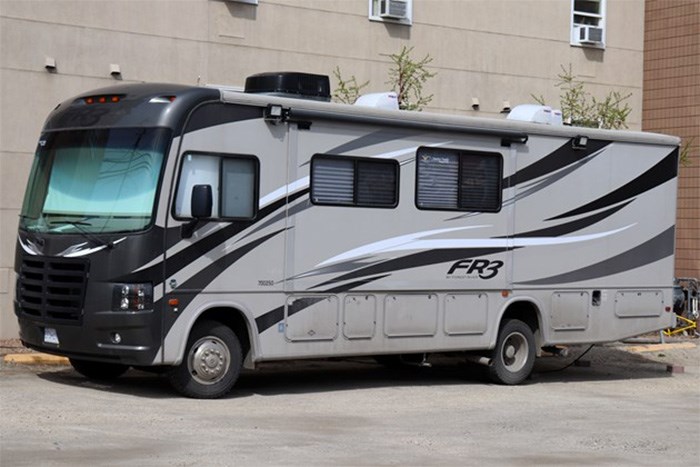 The RV Interior Health uses for the supervised consumption of drugs, nursing support and referrals to other services. (via Eric Thompson)
The RV Interior Health uses for the supervised consumption of drugs, nursing support and referrals to other services. (via Eric Thompson)
More than nine months after Interior Health launched a mobile supervised consumption unit in Kamloops, the service continues to see a steady stream of activity in the wake of B.C.'s opioid crisis.
Through the first three months of the year, the mobile unit had 1,223 client visits and seven overdose events, all of which were non-fatal.
The unit, which opened last June, had 3,484 client visits and 11 overdose events in 2017.
Comparatively, it hasn't been as busy as the unit in Kelowna, but as Interior Health notes, the availability of harm reduction supplies elsewhere could be a factor in that.
"The important thing to note is that people are accessing the mobile unit for harm reduction supplies, nursing support and referrals to other services, so it's not all for supervised consumption," says Tara Mochizuki, manager for mental health and substance abuse in Kamloops. "Kelowna sees a bit higher numbers than us, but they also don't have as many places that hand out harm reduction supplies."
Interior Health doesn't track the number of Naloxone kits that are distributed.
Currently, the RV moves between locations on the north and south shore and offers a variety of services, including drug testing and checking on the site. Mochizuki wants that message to get out, so more people who do consume drugs will reach out and take advantage of the service.
"Originally, when these first cropped up, they were called safe injection sites. This is similar, except we're calling it a supervised consumption because people are able to ingest pills or inject drugs. They aren't allowed to smoke on the unit because of the risk of exposure to our staff. Supervised consumption is just another name for it, and the reason it was switched around was one, because you can do it by different means and, two, there was an interest to remove the word 'safe.' We are continuing to message out to people that there is no safe use, but it's safer if you're in a supervised setting," she says.
As for the RV itself, it has achieved the health authority's goal of servicing all sides of Kamloops with a finite amount of funding. But if the opioid crisis continues, there's a possibility of a more permanent solution for the city, according to Mochizuki.
"The mobile unit was proposed as a bit of a stop-gap around the emergency. I think it's possible that we would look at; if it's demonstrated after the overdose emergency or if the emergency continues to be a really effective measure, then I think we would want to have it be more permanent and more firmly implanted in our services. It's not something that we're thinking about right now, but it's foreseeable that it could be," she says.


